
2 minute read
Forest Cover on Campus
Forest Connectivity

The northern forest on campus abuts State Forest land, which is also labeled as core forest by Biomap 3. These areas are large tracts of continuous forests that provide habitat for species that require undisturbed forests. This connectivity to core forests shows the importance of this forested area on campus. It not only provides habitat to specialized forest species, but also can act as a buffer against aggressive exotic species that would spread into the core forest. Fragmentation of habitat increases the vulnerability of exotic species invading and negative impacts to native species. Dynamic forest management is recommended for this area to ensure the continual health of the forest and its abutting core forest.
Pittsfield State Forest
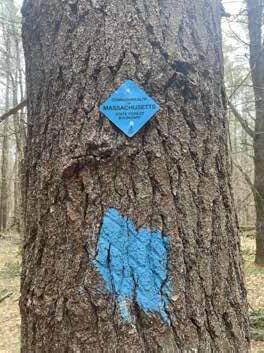
Flora and Fauna: Wetlands

Wetlands
Wetlands are areas where the soil is permanently or seasonally saturated, creating habitats for specialized plant and animal species. BCC is fortunate to have wetlands, both in the northern and southern sections of campus, that contribute to the ecological diversity of the campus. Wetlands play a vital role in purifying water, reducing flooding, supporting biodiversity, and sequestering carbon.
The large wetlands in the southern section are flooded year-round and have several open-water ponds and deep marshes. This year-round presence of water is helped in part by the presence of ecosystem engineers, beavers. Beaver dams regulate water flow, helping to prevent floods during heavy rainfall and maintaining water levels during dry periods. The slowing down and pooling of water also facilitates sediment deposition, which improves water quality by filtering pollutants and excess nutrients. Additionally, wetlands act as natural reservoirs, replenishing groundwater and providing a stable water source for wildlife and nearby vegetation.
In these wetlands at BCC, there are an array of water-loving plants such as cattails, sedges, rushes, and willows. These plants provide food and shelter for amphibians, birds, fish, and insects. Wetlands also serve as crucial habitat for pollinators. The water-loving plants found in wetlands provide abundant nectar and pollen resources, attracting a variety of bees, butterflies, and other pollinating insects. These wetlands are also mapped by NHESP as priority habitat for rare and endangered species.
These wetlands additionally are valuable educational resources, offering opportunities to study this ecosystem and its hydrology. A trail currently leads to the edge of the wetlands for observation; however, many students and faculty were unaware of this natural feature and trail when the Conway team spoke with them at campus.
Wetlands on Campus
Wetlands, Streams, and Priority Habitat around the Campus
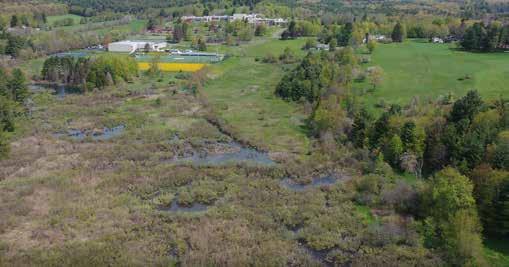
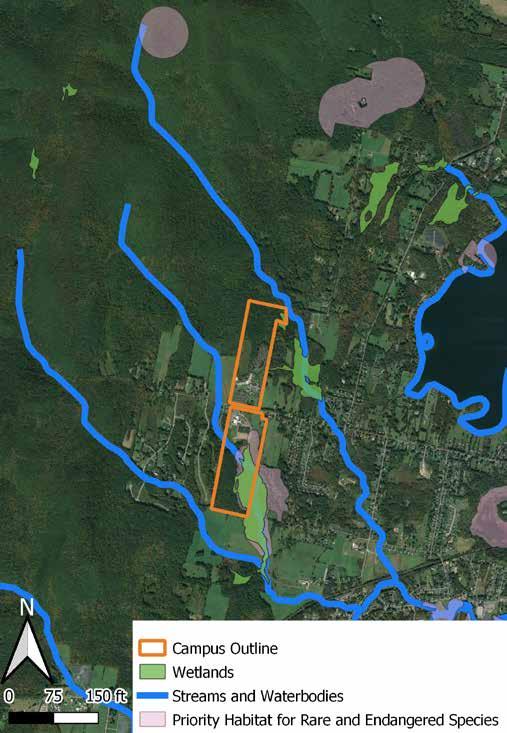


Flora and Fauna: Meadows and Lawns Meadows


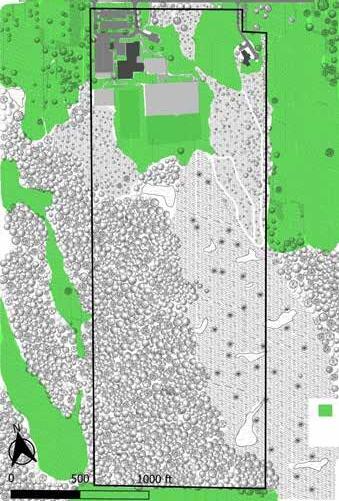


Meadows are open areas abundant with wildflowers, grasses, and other herbaceous plants. They are characterized by a high degree of sunlight penetration, allowing for vigorous growth of diverse vegetation. The BCC campus has meadows that provide essential habitat for pollinators such as bees, butterflies, and hummingbirds. A large 10-acre meadow in the northern campus is managed on a 3-year rotational mowing schedule. One-third of the meadow is mown every year to prevent woody encroachment and continue this early successional wildflower habitat.
The college's meadows host vibrant wildflowers like goldenrods, milkweeds, and asters which attract pollinators and support the local ecosystem. These areas are used as living laboratories for students studying ecology, entomology, ornithology, and botany. Experimenting in different ways to create more meadows offers opportunities for research and hands-on learning experiences for students and the public.
Lawns
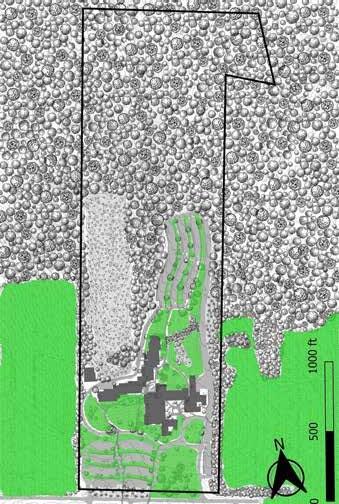
While lawns are less ecologically complex than forests, meadows, or wetlands, lawns serve important functions on the BCC campus. They provide recreational areas for students and staff and contribute to the current open aesthetic of the campus.
BCC is already practicing some ecological lawn management practices, such as mowing at higher heights allowing for some flowering of small plants, and they have eliminated pesticide and fertilizer use. Though predominantly covered with non-native cold season turf grass, lawns can still support a variety of plant species such as clovers, thyme, self heal, and native grasses that can provide pollinator food and host plants. Increasing the species diversity of lawns at BCC would increase their pollinator benefits and reduce maintenance costs and carbon emissions. Lawn areas that are not heavily used can be changed to other plant types such as meadows, shrubs, gardens or forests resulting in budgetary savings and climate resilience benefits.










